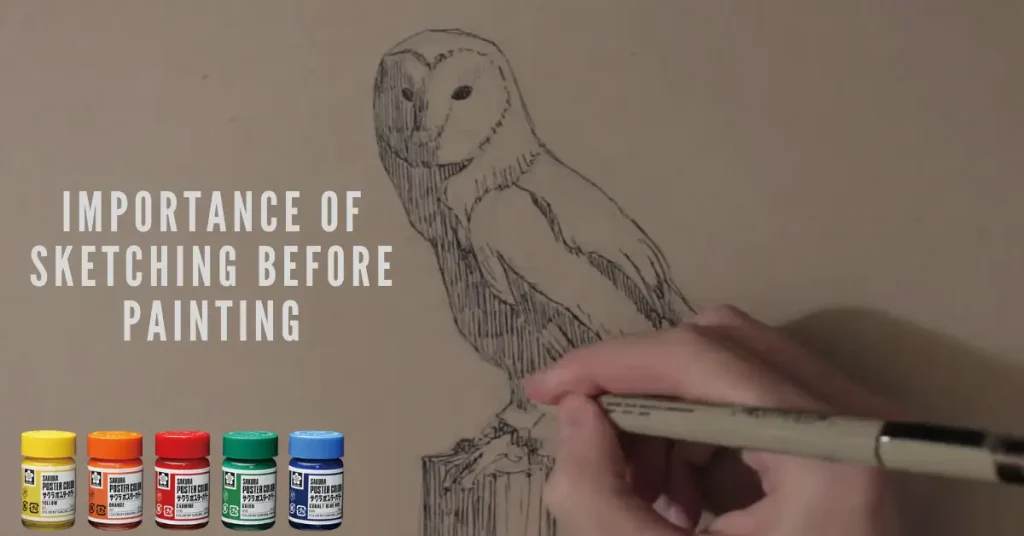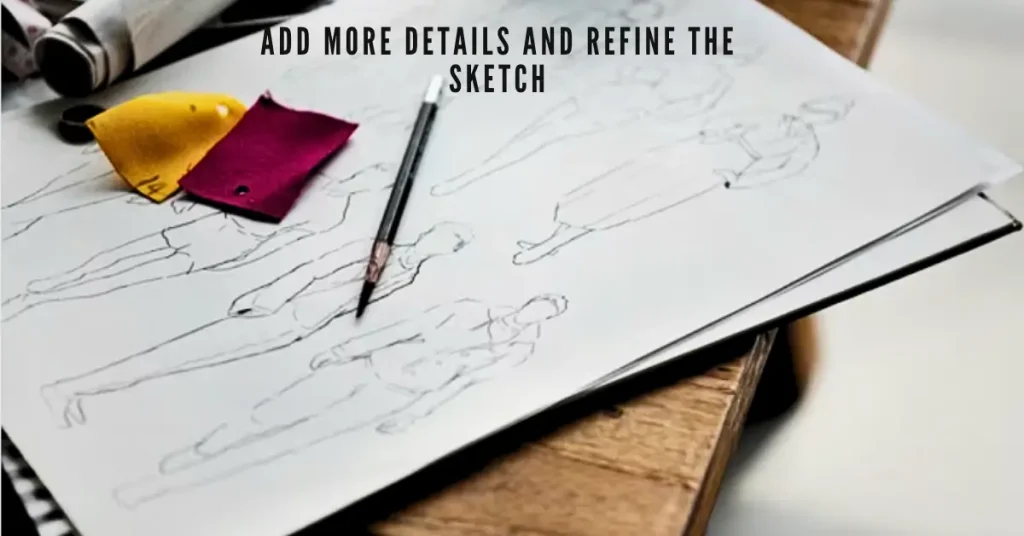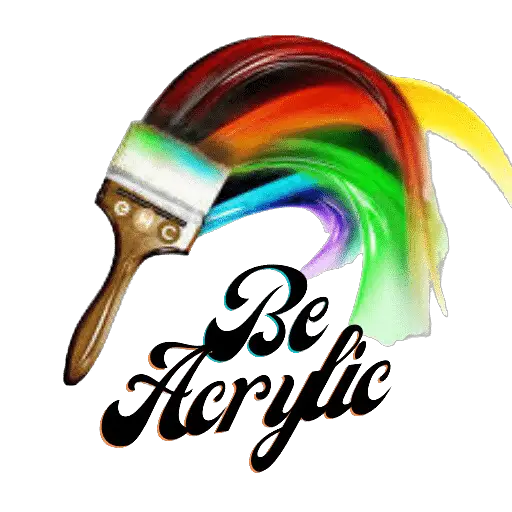A good plan can lead you to successful results. If you have a paint project on canvas, especially as a beginner, you must draw a rough sketch before applying acrylic.
In this blog post, I’ll help you choose the right sketching tools, a step-by-step procedure to draw a sketch, and tips and tricks on how to correct your mistakes and get successful painting.
This post on how to sketch on canvas before acrylic painting is written and edited after practical applications of sketching techniques by our professional artists and painters. The knowledge shared here comes from reliable resources such as the Art Center College of Design in Pasadena, California.
Importance of Sketching Before Painting
• Sketching before acrylic painting is crucial as it helps you plan and organize your composition, define the subject’s proportions, and work out the overall design.
• It enables you to experiment with different ideas, make adjustments, and avoid potential mistakes on the canvas.
• Underdrawing for acrylic painting helps to improve your understanding of the subject, perspective, and lighting which leads to a more successful and satisfying acrylic painting outcome.

How To Sketch On Canvas Before Acrylic Painting? Step By Step
Sketching on canvas before painting is an essential and crucial step. It is quite easy and interesting too. Follow these step-by-step instructions:
Step 1: Gather materials and setup
Before starting, collect all necessary materials such as:
• Canvas
• Drawing pencils (preferably graphite)
• Erasers
• Ruler
• Reference images or objects
Set up your workspace with good lighting and ensure your canvas is properly secured on an easel or flat surface.
Step 2: Choose your subject and reference
Decide on the subject you want to paint and find a suitable reference image or object to work from. This could be a photograph, a still-life arrangement, or even a sketch you’ve made previously.
Step 3: Observe and analyze the subject
Spend some time observing your reference. Analyze the main shapes, proportions, and key details. Identify the prominent lines, angles, and focal points in the subject.
Step 4: Block in the basic shapes
With a light pencil, take a start by blocking in the basic shapes of your subject. Use simple geometric forms (circles, squares, ovals) to represent the main elements. For example, if drawing a face, start with a circle for the head and ovals for the eyes.
Step 5: Establish proportions and angles
Using your reference and ruler, compare the sizes and angles of different parts of the subject to maintain accurate proportions. Pay close attention to the distance between objects and their relative positions. For example, if you’re drawing a face, measure the margins of eyes and other organs from their respective corners.
Step 6: Add more details and refine the sketch
Gradually add more details to your sketch. Focus on one section at a time, zooming in on specific areas and capturing complex features. Use various grades of pencils to get different levels of darkness and shading.

Step 7: Check for symmetry and balance
Regularly check for symmetry and balance in your sketch. Ensure both sides of the subject mirror each other accurately, and the composition feels visually balanced.
Step 8: Correct mistakes and adjust as needed
Throughout the sketching process, don’t hesitate to correct any mistakes or make adjustments. Use your eraser to clean up any stray lines or lines that don’t match the reference.
Step 9: Add value and shading
As you continue to refine the sketch, go for adding value and shading to give the subject dimension and depth. Concentrate on the light source in your reference, and render shadows and highlights accordingly.
Step 10: Finalize the sketch
Once you are satisfied with your detailed sketch, step back and evaluate it from a distance with different angles. Make any final adjustments to improve overall composition and accuracy.
What To Draw On Canvas For Beginners?
Painting on canvas can be a great way to start your artistic journey as a beginner. Here are some simple yet effective ideas to get you started:
• Nature Scenes
Start with something familiar like a serene landscape, a beach, or a forest. Nature scenes often involve basic shapes and colors which makes them easier for beginners to recreate.
• Still Life
Arrange simple objects like fruits, flowers, or household items on a table and draw what you see. Still, life exercises help develop observational skills and an understanding of light and shadow.
• Abstract Art
Experiment with abstract shapes and colors. You can freely express yourself without worrying about realistic representation. This can enable you to creativity and self-expression.
• Simple Portraits
Practice drawing the faces of family members or friends. Focus on capturing the basic facial features like eyes, nose, and mouth. Don’t worry about perfect likeness at this stage; it’s about getting comfortable with proportions.
• Animals and Pets
Start with easy-to-draw animals like cats, dogs, birds, or fish. Observe their basic shapes and try to replicate them on canvas.
• Botanical Illustrations
Draw flowers, leaves, or plants with attention to detail. Botanical drawings can be relaxing and also help you learn to observe and replicate intricate patterns.
• Geometric Patterns
Play with geometric shapes and create patterns using lines, circles, triangles, and squares. It’s a great exercise for understanding symmetry and precision.
• Silhouettes
Choose a subject and create its outline as a silhouette. This simplifies the drawing process and helps you to focus on the overall form.
Tips For Beginners While Sketching
• Start Small:
Begin with smaller canvases or sketchbooks for acrylic painting to build confidence and avoid feeling overwhelmed.
• Practice Regularly:
Consistent practice is key to improving your skills. Set aside time each day or week for drawing.
• Use References:
Utilize photographs or images as references for your drawings. They can help you understand proportions and details.
• Try Out Different Materials:
Try different drawing tools like graphite pencils, charcoal, pastels, or colored pencils to discover what suits you best.
• Learn From Tutorials:
Watch online tutorials or attend beginner art classes to learn new sketching techniques and gain inspiration.
• Don’t Fear Mistakes:
Mistakes are a natural part of learning. Embrace them and see them as opportunities to improve.
How To Draw On Canvas With Pencil?
To draw on canvas, use a pencil to lightly sketch the basic shapes and outlines of your drawing. Avoid pressing too hard to allow for easy adjustments. Gradually add more details to your drawing.
Use varying pencil pressures to create shading and depth. Once you’re satisfied with the sketch, use the eraser to remove any unwanted lines and clean up the drawing.
Can You Draw On a Canvas Board?
Yes, you can draw on a canvas board. It is specifically made for various art mediums like acrylics, oils, and other paints. It is good for beginners as well as professional artists.
FAQs
What should I put on my canvas before acrylic painting?
Before acrylic painting, prime your canvas with acrylic gesso to create a smooth, absorbent surface. In addition, sanding the primed surface can give you a more refined base.
Can you paint over a pencil with acrylic?
Yes, you can paint over a pencil with acrylics, as they will cover the pencil marks effectively. However, you can erase the pencil marks even after painting.
Should you sketch before you paint?
Sketching before painting is optional but can help plan your composition and prevent mistakes. For beginner artists, it is a crucial step.
Which comes first drawing or painting?
The drawing usually comes first, as it serves as a foundation for the painting, but some artists prefer to paint directly without a detailed drawing.
Conclusion
I hope you’re now well up on how to sketch on canvas before acrylic painting. The more you understand the basic angles and proportions of the object, the more you can sketch it.
So go ahead, pick up that pencil, and let your imagination take flight on the canvas!
Happy sketching and painting!
- How To Buff Acrylic Enamel Paint In 5 Easy Steps? - February 2, 2024
- How To Make Acrylic Paint More Opaque? 10 Effective Methods - February 1, 2024
- How To Sketch On Canvas Before Acrylic Painting? Draw Like a Pro - January 31, 2024

